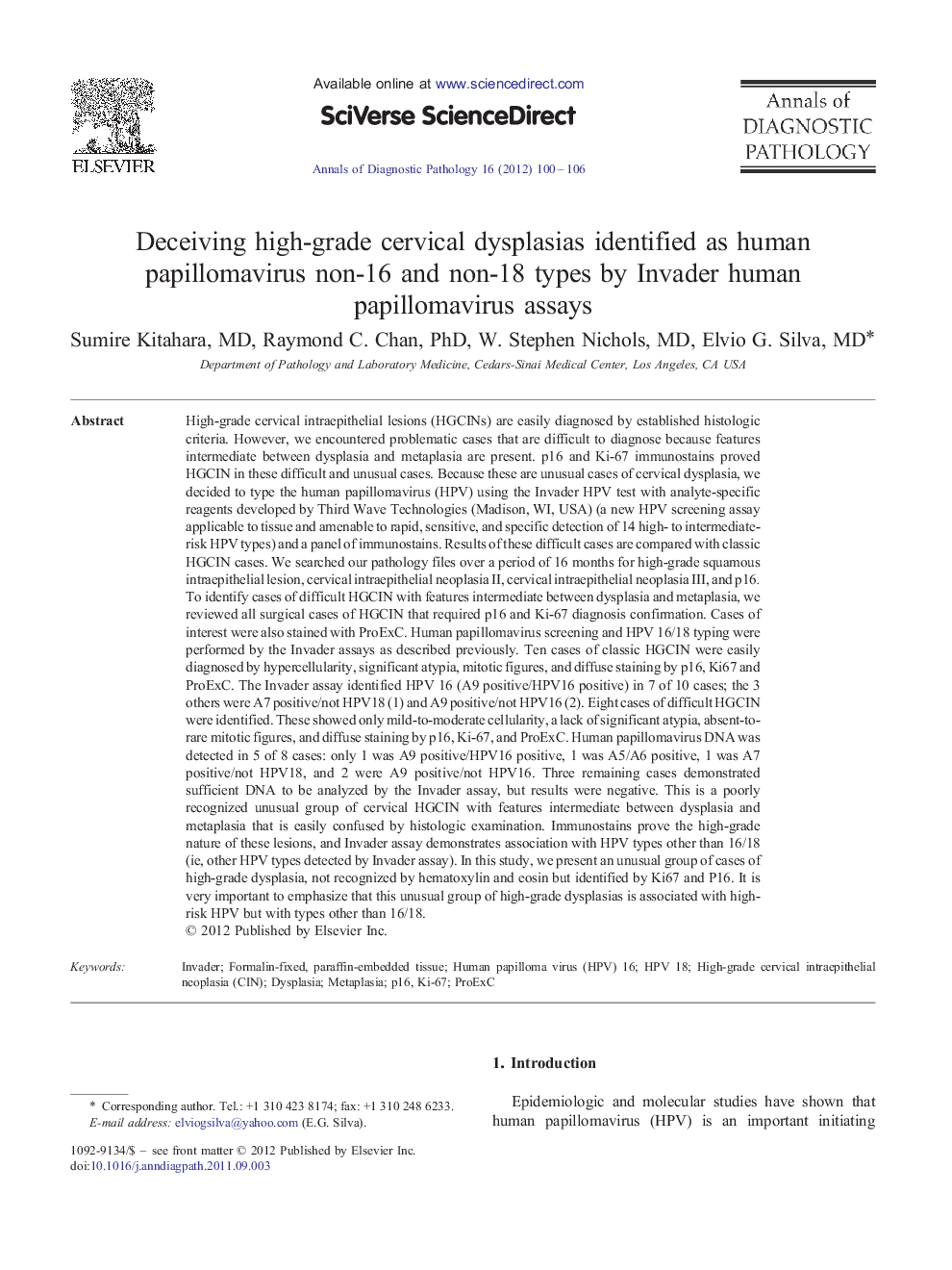| کد مقاله | کد نشریه | سال انتشار | مقاله انگلیسی | نسخه تمام متن |
|---|---|---|---|---|
| 4130016 | 1606498 | 2012 | 7 صفحه PDF | دانلود رایگان |

High-grade cervical intraepithelial lesions (HGCINs) are easily diagnosed by established histologic criteria. However, we encountered problematic cases that are difficult to diagnose because features intermediate between dysplasia and metaplasia are present. p16 and Ki-67 immunostains proved HGCIN in these difficult and unusual cases. Because these are unusual cases of cervical dysplasia, we decided to type the human papillomavirus (HPV) using the Invader HPV test with analyte-specific reagents developed by Third Wave Technologies (Madison, WI, USA) (a new HPV screening assay applicable to tissue and amenable to rapid, sensitive, and specific detection of 14 high- to intermediate-risk HPV types) and a panel of immunostains. Results of these difficult cases are compared with classic HGCIN cases. We searched our pathology files over a period of 16 months for high-grade squamous intraepithelial lesion, cervical intraepithelial neoplasia II, cervical intraepithelial neoplasia III, and p16. To identify cases of difficult HGCIN with features intermediate between dysplasia and metaplasia, we reviewed all surgical cases of HGCIN that required p16 and Ki-67 diagnosis confirmation. Cases of interest were also stained with ProExC. Human papillomavirus screening and HPV 16/18 typing were performed by the Invader assays as described previously. Ten cases of classic HGCIN were easily diagnosed by hypercellularity, significant atypia, mitotic figures, and diffuse staining by p16, Ki67 and ProExC. The Invader assay identified HPV 16 (A9 positive/HPV16 positive) in 7 of 10 cases; the 3 others were A7 positive/not HPV18 (1) and A9 positive/not HPV16 (2). Eight cases of difficult HGCIN were identified. These showed only mild-to-moderate cellularity, a lack of significant atypia, absent-to-rare mitotic figures, and diffuse staining by p16, Ki-67, and ProExC. Human papillomavirus DNA was detected in 5 of 8 cases: only 1 was A9 positive/HPV16 positive, 1 was A5/A6 positive, 1 was A7 positive/not HPV18, and 2 were A9 positive/not HPV16. Three remaining cases demonstrated sufficient DNA to be analyzed by the Invader assay, but results were negative. This is a poorly recognized unusual group of cervical HGCIN with features intermediate between dysplasia and metaplasia that is easily confused by histologic examination. Immunostains prove the high-grade nature of these lesions, and Invader assay demonstrates association with HPV types other than 16/18 (ie, other HPV types detected by Invader assay). In this study, we present an unusual group of cases of high-grade dysplasia, not recognized by hematoxylin and eosin but identified by Ki67 and P16. It is very important to emphasize that this unusual group of high-grade dysplasias is associated with high-risk HPV but with types other than 16/18.
Journal: Annals of Diagnostic Pathology - Volume 16, Issue 2, April 2012, Pages 100–106